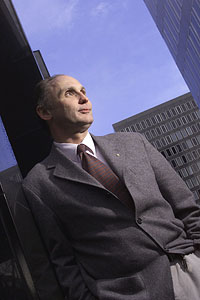 Sometimes you have no other option than to get your flash unit out of it’s hot shoe and make it perform like a studio style strobe. Whether it’s the Canon 550ex, the Nikon SB28DX or another make altogether there are some simple steps you can take to produce cultured and interesting images.
Sometimes you have no other option than to get your flash unit out of it’s hot shoe and make it perform like a studio style strobe. Whether it’s the Canon 550ex, the Nikon SB28DX or another make altogether there are some simple steps you can take to produce cultured and interesting images.
The telephone message goes something like this: “Meet this guy, not sure of his name yet at Euston railway station and take him somewhere to shoot a nice portrait. We’ll probably only use a mugshot, so don’t go mad.” The second message wasn’t a lot better, but I was well on my way to one of Europe’s busiest rail stations to meet the man with no name who was to meet me by platform six. The third call said “His name is Molyneux, he’s about fifty and he’s there now”. I jumped out of the car (having parked it legally) and with camera bag in hand I ran to meet my man. Knowing the area well I planned to drag him back to a small park, via the car to grab lights, and shoot some outdoor portraits in the evening sunshine.
Having found him a lot more easily than I had bargained for I then discovered that he was shortly to catch a train and had to be interviewed in the mean time. This gave me about ten minutes to shoot the pictures and no way of getting back to the car to gather kit, oh! and it was about to rain.
The sky was still blue just outside the station concourse and the buildings gave us an area of shade so I decided to go with a similar idea to the “shooting from the shade” technique explained a few months ago. (more…)

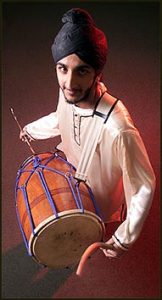 When you have just spent three hours driving to a job going over what the picture editor and the designer said to you about the pictures that were required it is inevitable that you start to make some plans. This job was certainly such an occasion.
When you have just spent three hours driving to a job going over what the picture editor and the designer said to you about the pictures that were required it is inevitable that you start to make some plans. This job was certainly such an occasion.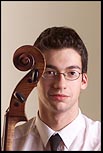
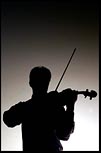

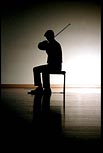 The way that an image is destined to be used dictates how you shoot it. This example talks about the difference in approach to shooting what is essentially the same subject, but for two different uses. I went to this southwest London school to shoot a “fly on the wall” documentary article about a music project to fill a couple of pages in a tabloid sized magazine.
The way that an image is destined to be used dictates how you shoot it. This example talks about the difference in approach to shooting what is essentially the same subject, but for two different uses. I went to this southwest London school to shoot a “fly on the wall” documentary article about a music project to fill a couple of pages in a tabloid sized magazine. The “Interview Portrait” is one of the most difficult tasks that I am asked to undertake. Of course it’s easy enough to just turn up and shoot a picture, but actually making a proper portrait is a really difficult task. This portrait was frame 64 out of 73, frames 1- 30 were the safe shots and 31 – 73 were far more experimental.
The “Interview Portrait” is one of the most difficult tasks that I am asked to undertake. Of course it’s easy enough to just turn up and shoot a picture, but actually making a proper portrait is a really difficult task. This portrait was frame 64 out of 73, frames 1- 30 were the safe shots and 31 – 73 were far more experimental. This classroom shot was made for a story about inner city schools performing well academically. It needed to stand out from other school images and the light in the room was poor. There were also a dozen adults in the room – all of whom I needed to keep from my picture.
This classroom shot was made for a story about inner city schools performing well academically. It needed to stand out from other school images and the light in the room was poor. There were also a dozen adults in the room – all of whom I needed to keep from my picture. This colourfully lit picture goes with a story about inner city crime and mugging. The boy in question worked on a report about youth as the victims in the area he lives in. I wanted the picture to have athmosphere, and there is nothing like a bit of coloured light for adding some. In lighting the background it is important to place the background light so that the viewer doesn’t notice where the colour is coming from.
This colourfully lit picture goes with a story about inner city crime and mugging. The boy in question worked on a report about youth as the victims in the area he lives in. I wanted the picture to have athmosphere, and there is nothing like a bit of coloured light for adding some. In lighting the background it is important to place the background light so that the viewer doesn’t notice where the colour is coming from.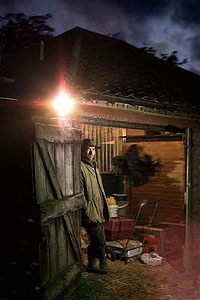 Arriving at the job is usually the best times to start having ideas about locations for a portrait. Buildings often have features that lend themselves to use in a photograph, and the grounds can be just as inspirational.
Arriving at the job is usually the best times to start having ideas about locations for a portrait. Buildings often have features that lend themselves to use in a photograph, and the grounds can be just as inspirational. My love of lighting photographs outdoors has made me into an observer of the work of other photographers. If I see a shot that I like I spend time working out how it was done, and if that shot was lit I am even more interested
My love of lighting photographs outdoors has made me into an observer of the work of other photographers. If I see a shot that I like I spend time working out how it was done, and if that shot was lit I am even more interested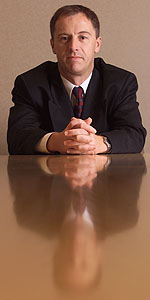 When you arrive at a location to shoot a portrait you have to keep up a converstaion with your subject (or someone who works for them) while deciding how and where to shoot the picture.
When you arrive at a location to shoot a portrait you have to keep up a converstaion with your subject (or someone who works for them) while deciding how and where to shoot the picture.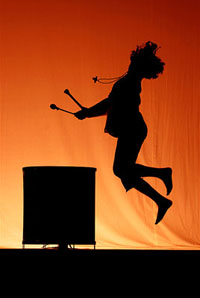 There are many reasons for using a silhouette, and the most common is to preserve the anonymity of the subject. The identity of children is something we are often asked to keep secret – especially if that child has been in trouble with the authorities. This one was done purely for artistic effect…
There are many reasons for using a silhouette, and the most common is to preserve the anonymity of the subject. The identity of children is something we are often asked to keep secret – especially if that child has been in trouble with the authorities. This one was done purely for artistic effect…